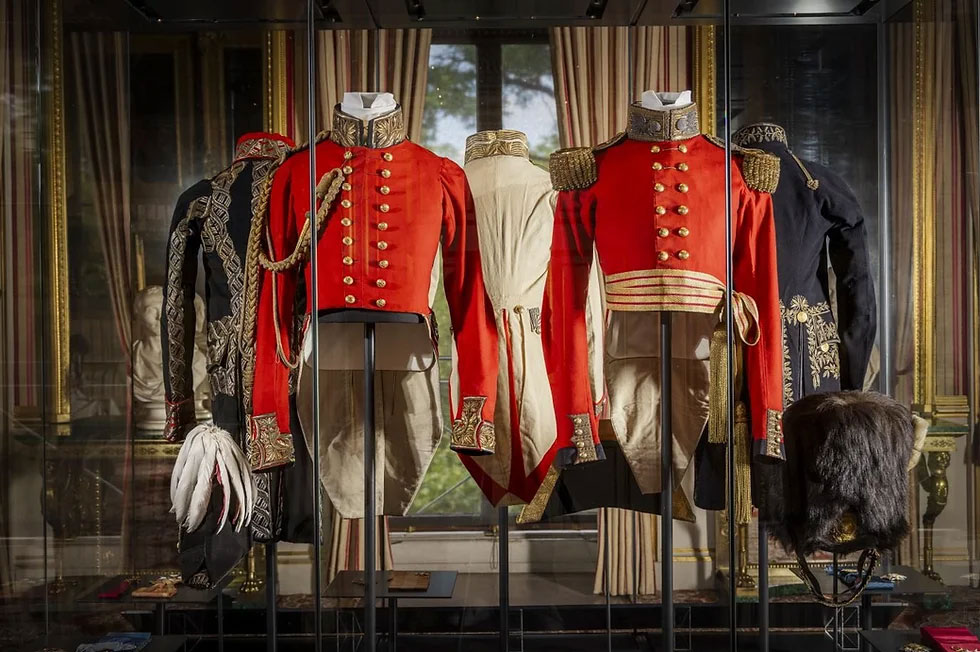
The outstanding military achievements of the 1st Duke of Wellington are celebrated in a new exhibition at Apsley House, London.
Five dress uniforms and their accessories are displayed for the first time, four of which represent the honours awarded to the 1st Duke by European nations in recognition of his victories during the Napoleonic Wars.

The military uniforms all required conservation treatment to enable them to be safely and pleasingly displayed. At the back of the uniform jacket, verdigris had badly stained the ivory-coloured fabric.
However, testing with a range of conservation solvents enabled the disfiguring marks to be successfully removed.

Conservation repair was also required to support the shattered silk lining of the Field Marshal of the British Army coatee – a photograph of the repair being carried out was featured in Country Life magazine. The uniform is identical to that shown in the portrait of the 1st Duke painted by Lawrence. The Field Marshal of the Austrian Army uniform (1818), was marked with green stains that had formed on some of the brass buttons. (Verdigris is a bi-product of brass being in contact with moisture and is vivid green in colour).

Extensive repair was also carried out to the Marshall General of Spain uniform which had sadly suffered the effects of moth infestation.
Equal in importance to conservation repairs, preparation for display required the body-forms to be adjusted to ensure each dress uniform fitted perfectly. The precise length of the torsos needed to be calculated; some had waistcoats while others were cut short above the waist. A means of supporting the tails of the uniform jackets was required to enable them to be held at the correct angle to form the body profile. An extension to the back of the display forms was created from a stiff material and covered with fabric that matched that of the uniform lining.

The style of mid-19th century collars and cravats were copied from portraits of the period and added around the neck of each display form. These accessories completed the dressing of the uniforms and in doing so, hopefully, provides a realistic interpretation of the garments.
The spectacular head-wear includes the 1st Duke’s bearskin and bicorn, resplendent with white cockade. Display stands with discrete inner supports were specially designed to convey the appearance that the head wear is balanced on the top of a short rod.
It is ironic that 1st Duke of Wellington was known to have preferred wearing plain civilian attire, rather than elaborate dress uniforms. Perhaps this personal choice is a contributing factor in the preservation of this unique collection.